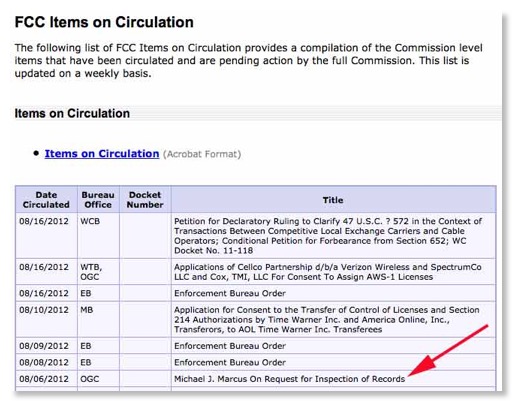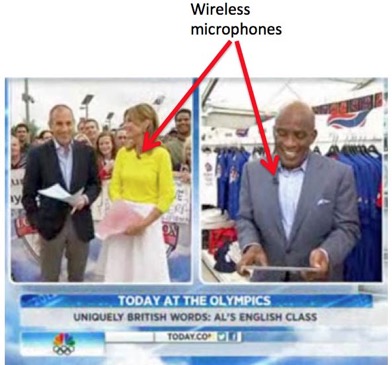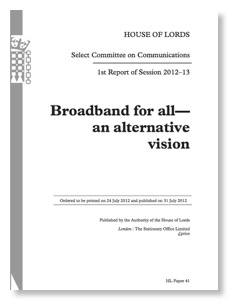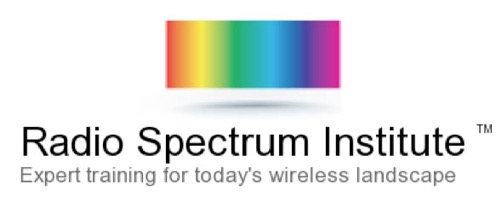On Moving the Upper Frontier of Commercial Spectrum Use
In the August 2012 issue of IEEE Wireless Communications is the above article by your blogger. The article starts
International spectrum allocations of the International Telecommunications Union (ITU) now go to an upper limit of 275 GHz. The upper limit of actual production commercial equipment appears to be in the 80 GHz range in the millimeterwaves or “mmW” region (30-300 GHz). While these upper frequencies have been often associated with fixed and satellite uses, the emergence of IEEE 802.11ad/WiGig mobile standards at 60 GHz and interest in broadband mobile applications above 100 GHz shows that many different uses may now be possible.
The initiation last year of the new IEEE Transactions on Terahertz Science and Technology shows that basic technology is moving on somewhat independent of lagging spectrum regulation. In addition, a technical highlight of the 2008 Beijing Olympics - ignored by the general press - was the use of 120 GHz point-to-point terrestrial links for high definition video distribution from venues to a central site and showed the potential for commercial spectrum use in presently virgin upper spectrum.
120 GHz Japanese system used at Beijing Olympics

Isn’t it time FCC start removing at >95 GHz such barriers to innovation and the necessary capital formation for it?
There are some valid issues of sharing these bands with existing passive allocations for radio astronomy and remote sensing as well as active federal government systems, but these make it more important that FCC give guidance to industry on how to commercialize these bands while protecting the other allocations. The nature of propagation at these bands as well as the ease at which narrow beam antennas can be used means that the concepts of spectrum regulation used at lower bands are not necessarily applicable and sharing is much more feasible.
Motorola Wages "Reverse FOIA" Fight on Explanation of Interference from Motorola Product to Safety-related Weather Radar

Observers of the FCC’s minutia have noticed that your blogger’s name is now on the FCC’s “Items on Circulation” list for the 2nd time. This post explains why: A FOIA request I filed on behalf of this blog and the public interest is being blocked to a considerable degree by a “reverse FOIA” campaign from Motorola dealing with a product line it sold last year.
The Court of Appeals for the District of Columbia Circuit has defined a "reverse" FOIA action as one in which the "submitter of information -- usually a corporation or other business entity" that has supplied an agency with "data on its policies, operations or products -- seeks to prevent the agency that collected the information from revealing it to a third party in response to the latter's FOIA request."
So here are the basic facts:
- On August 11, 2011 I submitted a FOIA request to FCC for Motorola’s response to an Enforcement Bureau Letter of Inquiry (“LOI”) in EB-09-SE- 064, the investigation of U-NII interference to Terminal Doppler Weather Radar (TDWR) , a safety-related system to detect severe storms near airports, near the San Juan International Airport. This document was cited in an April 2010 Consent Agreement between Motorola and FCC where Motorola “agree(d) that it will make a voluntary contribution to the United States Treasury in the amount of $9,000” and make some management changes and FCC agreed to terminate the investigation.
- Rather than getting a response from FCC, I got a response from Motorola that included a severely redacted copy of their letter to FCC. (Those of us who worked at FCC know that it was traditional for FCC to give “professional courtesy” to Motorola in the past.) Much to my surprise, a September 9, 2011 letter from FCC’s Enforcement Bureau simply ratified Motorola’s redactions, part of which are shown below:

Motorola redactions of their response to FCC/EB which included a request for the FCC ID number of the unit involved and a question about whether it was properly certified. Is this really proprietary information?
- On September 23, 2011 (nearly a year ago) I filed a timely appeal of these excessive redactions under the provisions of 47 C.F.R. §0.461(i)(1). Motorola engaged Wiley Rein (“Broadcasting & Cable has recognized Wiley Rein as a ‘powerhouse law firm.’ “ ) to wage a reverse FOIA fight to protect all the original redactions.
- While it is generally felt that the FOIA legislation requires redaction of proprietary information, the Supreme Court held in Chrysler Corp. v. Brown that "Congress did not design the FOIA exemptions to be mandatory bars to disclosure" and that the agency could release information in the public interest.
A major reason for my request for this information is not voyeurism and has been discussed here previously: the software defined radio (SDR) rules adopted in Docket 00-47 were modified shortly afterwards in Docket 03-108 at the request of several manufacturers including Motorola. These changes watered down the software security provisions for SDRs. As a result of these concerns, the former 2.932(e) was replaced with the present 2.944 which does not apply to transmitters unless the “software is designed or expected to be modified by a party other than the manufacturer”. It is your blogger’s guess that the root cause of this series of interference incidents is this rule change.
While Motorola, and hopefully the company that now makes the Canopy products in question, are bound by the Consent Agreement and are unlikely to repeat the actions that resulted in this dangerous interference, other manufacturers of radios implemented with SDR technology are still only bound by the vague terms of the present §2.944 and might take similar actions to what Motorola did and is now trying to hide in this reverse FOIA action. Is it in the public interest to see what the root causes of this problem were and if necessary take steps to prevent any other firms from doing what Motorola employees did here?
Readers may recall a recent FOIA controversy at FCC involving Google. In that case Google told FCC to release only a highly redacted version of its “Spy-Fi” report which was done on 4/13/12. Under blistering criticism, Google released the report with minimal redactions - the only remaining redactions appear to be identities of people interviewed.

Google’s original redactions of “Spy-Fi” FCC report along with the unredacted text released by Google after public outcry. Large corporations, like government agencies, sometimes try to hide their misdeeds from the public by misusing information disclosure laws.
Motorola has changed a lot in the past 2 decades. The Canopy device involved in this controversy is part of a product line that was sold to Cambium Networks in September 2011, about the time this FOIA battle started. The remaining publicly owned company, Motorola Solutions, focuses on the Part 90 market with public safety being a key customer. (“Motorola Solutions serves both enterprise and government customers with core markets in public safety government agencies and commercial enterprises” ref.) Motorola Solutions has a set of publicly stated values that includes:
Motorola Solutions, is it really worth risking your reputation with your current customer base on this issue and the vagaries of the 8th Floor? I have offered repeatedly to settle this FOIA issue through discussions and recognize that the document in question has some valid trade secrets. Google made a wise decision to err on the side of disclosure, perhaps you should also. Your counsel knows how to reach me.We are accountable. We stand behind the work we do, the contributions we make and the high business standards we maintain.
Public safety users, do you really want to depend on an infrastructure provider that doesn’t meet the standard of transparency that Google set with respect to admitting practices that resulted in safety-related interference? Perhaps you should press Motorola to come clean on what really happened in San Juan?
UPDATE
FCC has now released an Order supporting some of your bloggers requests to remove redactions and upholding Motorola’s requests for redaction on other issues. However, the final redactions have not been released yet and any decision to appeal further will depend on the nature of the final redactions.
9th Circuit Court of Appeals Hears CTIA vs. SF Cell Phone Disclosure Case:"Must See TV"
Video of oral arguments
Your blogger surprised the CTIA legal team on Thursday by showing up at the Federal Courthouse in San Francisco to hear the oral arguments before the 9th Circuit of Appeals on the litigation captioned CTIA - The Wireless Association v. The City & County of S.F. as well as a countersuit. (Actually I was in San Francisco on an unrelated technical matter and had free time in the morning and the oral argument seemed the best free show in town.) The case was argued before Judges Schoeder, Callahan, and Korman by CTIA’s Andrew McBride of Wiley Rein and Deputy City Attorney Vince Chhabria represented San Francisco.
If you are interested in the pleadings, CTIA has posted one recent pleading. The other side has 2 pleadings available on their website: San Francisco's opening 9th Circuit brief (Jan. 25, 2012);Francisco's opening 9th Circuit brief (April 4, 2012) Complete pleadings of all parties are available on the court’s PACER system but registration is needed and fees must be paid if you download more than 150 pages/quarter. (If you use PACER, the case numbers are Nos. 11-17707, 11-17773 ). I will post links to more pleadings if the parties supply them.
On the eve of the oral arguments, GAO released a new report on the cell phone health issue. The SF City Attorney then used this for a press release:
Just two days before a key federal appeals court hearing was set to get under way in the mobile phone lobby's legal challenge to San Francisco's cell phone consumer information ordinance, the U.S. Government Accountability Office released a report expressing concern that the Federal Communications Commission has failed to keep up with scientific developments on the possible link between cell phone radiation and cancer. The report by the GAO -- the independent, nonpartisan auditing agency that works for Congress -- was commissioned a year ago to review FCC standards after a panel of 31 leading scientists from the World Health Organization concluded that the radiofrequency energy exposure from cell phones is "possibly carcinogenic." The report is titled, "Exposure and Testing Requirements for Mobile Phones Should be Reassessed."
At issue is a fact sheet that has been revised by the first judge to hear the case (available here at p. 68) and now includes the following statements:
The pending SF fact sheet is amazingly similar to a brochure that comes with all French cell phones and SIM cards as was discussed previously here. The brochure comes from FFT, the French counterpart of CTIA, and the content is shown on their website. Lest you think FFT is a wimp compared to CTIA in defending cellular interests on this issue, here is a recent letter from FFT to France Télévisions, the French counterpart of BBC, complaining about a TV documentary program on the RF safety issue."Although all cell phones sold in the United States must comply with radio-frequency safety limits set by the Federal Communications Commission, no safety study has ever ruled out the possibility of human harm from RF exposure.
"RF energy has been classified by the World Health Organization as a possible carcinogen (rather than as a known carcinogen or a probable carcinogen) and studies continue to assess the potential health effects of cell phones"
CNET.com wrote that McBride said San Francisco's attempt at educating the public about cell phone radiation was "laughable”. CNET went on to write “Chhabria pointed to California's Prop. 65, which requires the state to publish a list of chemicals known to cause cancer or birth defects or other reproductive harm. Businesses must label products or post warnings if a businesses knows or thinks that a listed chemical has been used.” The discussion between distinguished counsels and the 3 judge panel went on to discuss mandated Prop. 65 warning in Starbuck’s in California. I believe 2 of the 3 judges had never seen this warning and it is clear it was not affecting their coffee drinking habits.

“Chemicals known to the State of California to cause cancer and reproductive toxicity, including acrylamide, are present in coffee, baked goods, and other foods or beverages sold here. Acrylamide is not added to our products, but resulted from cooking, such as when coffee beans are roasted or baked goods are baked. As a result, acrylamide is present in our brewed coffee, including coffee made at home or elsewhere from our beans, ground, or instant coffee, baked goods or other foods sold here, in grocery stores or other locations.”
Mr. Chhabria pointed out that the language of Prop. 65 only applies to chemicals and thus does not apply to cell phones. However, he also pointed out that Pro. 65 requires such warnings for all chemicals identified by WHO as “possible carcinogens”, the same classification that cell phones are now in. Mr. McBride pointed out that if ink was a possible carcinogen, then all printed documents would have to be labeled under this concept. However, he did not address the point that WHO so classifies cell phones not ink.
Nevertheless there is not evidence that cell phones cause any pathology in their users and your blogger is puzzled by the “antis” and their focus on “malignant brain tumors”. If a pathology is ever proven, it could well be something entirely different! Or there could be no pathologies since there is not present understanding of how RF at typical levels could cause any pathology.
The James R. Browning U.S. Court of Appeals Building where the oral arguments were held was built in 1905 and reopened in 1910 after the 1906 earthquake. It is listed in the National Register of Historic Places. Here is a beautiful mosaic mural in the court room where the arguments were held.

Olympic News: Wireless Mics Work Well in a Marketplace Environment!

Watching the Olympics, you might not have noticed an interesting spectrum policy point: Wireless microphones (mics) are being used widely without any technical problems in a spectrum policy environment very different from the US: wireless mic users like most other spectrum users in the UK (including military users) are paying for spectrum access!
As we enter the era of incentive auctions, one of the issues people in Washington do not want to talk about is the future of wireless mics and their current spectrum. Clearly wireless mics are a socially constructive and economically important use of spectrum for the entertainment industry, conference facilities, and other applications. But wireless mics developed in the US on the assumption that interstitial use of “vacant” TV channels was a “free good”. Under NTSC analog technology with the UHF taboos resulting from poor TV receiver technology, or at least poor predictions of TV receiver technology, this was mostly true. Of course, the questionable large scale marketing by companies like Shure, Inc. of wireless mics to users not legally eligible to use them only complicated the issue.
Similarly the unwillingness of the entertainment users of wireless mics to confront the legal contradictions of using the technology as a key building block of their shows until Docket 04-186 showed up was also irresponsible, (One wonders about Walt Disney Co. with respect to its dual roles as a TV broadcasters with multiple licenses and the owner of Broadway shows that violated the Communications Act through their illegal use of wireless mics until recently. Had their lawyers done a risk analysis of this issue?)
It does not take much of a crystal ball to see that in the long term wireless mic use of UHF-TV spectrum will become questionable as this spectrum is in greater and greater demand. While mire less mics are important, their use is very sparse in space and time and normal allocation models are not a good match.
In the UK, Ofcom’s “dedicated band manager” for “programme-making and special events”/PMSE is JFMG, which is now owned by Arqiva, the company that actually owns and operates broadcast transmitters in the UK - operated on behalf of the programming originators. JFMG buys spectrum at market prices and then leases it for PMSE uses such as wireless mics to users who pay according to the amount of resources they use.
As we have seen in the Olympics it works! I suppose NBC would have preferred the US system where spectrum access is free. But why is that so important? While marketplace forces do not work all the time for all applications, the UK-style system is probably a better way to handle the wireless mic problem and will ease the inevitable transition to new technologies in various bands. Does anything think FCC really has the patience to handle that well?
NBC, Olympic Opening Ceremony, and DMCA

The part of the Olympic Opening Ceremony missing from
NBC’s coverage and apparently deleted from YouTube posts by NBC
On July 27 at 10:55 PM, just after the Olympic Opening ceremony, the antiestablishment blog Deadspin posted this surprising item: “Here’s The Opening Ceremony Tribute To Terrorism Victims NBC Doesn’t Want You To See”.
The major transitional element of today's London Olympics opening ceremony was a downtempo performance of adoptive sporting anthem "Abide With Me" by Scottish singer Emeli Sandé. The song and accompanying dance were a tribute to the victims of the 7/7 terror attacks in London that claimed 52 victims days after the 2012 Summer Olympic hosts were named. (It's also been suggested the performance was a memorial to the war dead.)
Regardless, it was a rather significant and emotional moment in the opening ceremony, coming just before the parade of nations—and it wasn't aired in the United States. Instead, viewers were treated to a lengthy and meaningless Ryan Seacrest interview of Michael Phelps. NBC regularly excises small portions of the opening ceremony to make room for commercials, but we've never heard of them censoring out an entire performance—especially to air an inane interview. We've asked NBC why they didn't air the tribute, and if they get back to us we'll let you know what they say. In the meantime, enjoy the performance everyone else in the world saw.
Several mainstream news sources picked up the news. For example, Time titled its article on the action “NBC’s Unkind Olympic Cut”. We will not quibble over NBC’s editorial judgement to prefer a Michael Phelps interview over this part of the opening ceremony, after all NBC paid billions for the rights to cover the Olympics. But I was curious about the missing segment and assumed I would find it on YouTube. There are indications on YouTube that people tried to post the version that was broadcast outside the US. No further explanation from YouTube. However, Bing quickly found the video. As of this posting it is available at 2 UK-based websites: Liveleak.com site shown at the bottom of this post and on the Deadspin.com.
I suspect that the issue here is the Online Copyright Infringement Liability Limitation Act (OCILLA) provisions of the Digital Millennium Copyright Act (DMCA). This provision allows copyright owners to demand that sites like YouTube remove copyrighter material - a very reasonable provision. But what about the case when the copyright holder has not interest in making the material available on any terms? When I studied patents in a course ages ago I was interested to learn that US patents grant the owned all rights over an invention and no one can use not without their permission. By contrast, most other countries at the time allowed use by other parties with fair compensation. US copyright holders apparently also have the right to deny the public access to information under any terms. I doubt if this is what the Founding Fathers meant in Article I, Section 8 of the Constitution. In this case NBC seems to be trying as hard as possible to keep Americans from seeing this innocuous 7 minutes of video as it is also missing from the voluminous NBC Olympics website.
UPDATE
Emeli Sandé was also in the Olympics closing ceremony and NBC did not cut her out the second time so Americans got to see and hear this wonderful performer.
A UK Alternative View on Broadband and the Future of Over-the-Air DTV
an alternative vision”. You probably did not see anything about it on US TV news programs, perhaps it was overshadowed by the Olympics. Or perhaps it was too troubling for the networks, or NAB, to address in a timely way. (As of this posting, NAB, CTIA, and Broadcasting & Cable have nothing about this report on their websites.)
(While we learned in high school and from Gilbert & Sullivan that the House of Lords consisted of hereditary peers, the scions of ancient dukes and earls, as a result of reforms in recent decades only 92 out of the present 775 members are hereditary peers, the rest being life peers appointed for life based on their own achievements.)
Here is the header from the article on the Daily Mail’s website:
The end of broadcast TV? House of Lords calls for all channels to go online (but you'll have to buy yet another box to watch them)
* Plan could see internet only TV service across the UK
* Report warns broadband speeds in rural areas will need to be improved before the move
The Daily Mail wrote
If you have only just managed to switch your TV to digital, bad news - you may soon have to buy yet another box.
A parliamentary inquiry today forecast a second wave of switchover as TV moves online.
The House of Lords says the government should begin planning for every channel to be available online to free up spectrum for services like high speed mobile phone services’.
Eventually the case for transferring the carriage of broadcast content, including public service broadcasting, from spectrum to the internet altogether will become overwhelming,' the Lords communications committee said in its report on internet infrastructure.
FCC sources report that the first draft of the National Broadband Plan had a discussion of reallocation from broadcast to broadband that was bolder than the final report but not as bold as this UK proposal. Within 30 minutes after the draft was given to the FCC Media Bureau, the Chairman’s Office started receiving calls from “The Hill” telling them to back off - such is the power of broadcasters in Washington!
Here is the text of the UK report that gives its controversial recommendation (para. 141)
We recommend that the Government, Ofcom and the industry begin to consider the desirability of the transfer of terrestrial broadcast content from spectrum to the internet and the consequent switching off of broadcast transmission over spectrum, and in particular what the consequences of this might be and how we ought to begin to prepare.
The UK report clearly recognizes that the switch would not be easy and that it should not be done until alternatives for media distribution are in place, operational, and affordable for all. But it recognizes the huge economic benefits of increasing broadband penetration - not just the benefit for certain industries, but for the whole society and economy.
The US National Broadband Plan has a key issue that is clearly missing, no doubt as a result of the political intervention on the first draft: If the US can achieve near universal penetration of broadband to US households by policies including making broadband the universal service equivalent of dial tone, why do we need over-the-air TV in populated areas. Indeed, if we are willing to use DBS for universal service-like video distribution, why do we even need over-the-air TV in rural areas?
Such a dramatic change has to be carefully planned and must respect the equities of the broadcasting industry. But is NBC in the business of pumping electromagnetic energy into the spectrum, most of which passes houses without any TV antenna, or is it in the business of putting together compelling programming that people want to watch and bundling that with compatible ads? Any such evolution must consider the needs of the economically disadvantaged and their right to continued access to “basic TV” as well as rural needs, but that is why FCC has had universal service programs.
Readers may recall a January post here with the following quote from Justice Alito during a Supreme Court oral argument:

What does Justice Alito and the House of Lords’ Communications Committee have in common? Appointments based on excellence in life accomplishments and life tenure. It would appear that officials without such life tenure are unwilling to raise serious long term questions of the public interest for even debate if they are unacceptable to strong trade associations.







![Validate my RSS feed [Valid RSS]](valid-rss-rogers.png)

